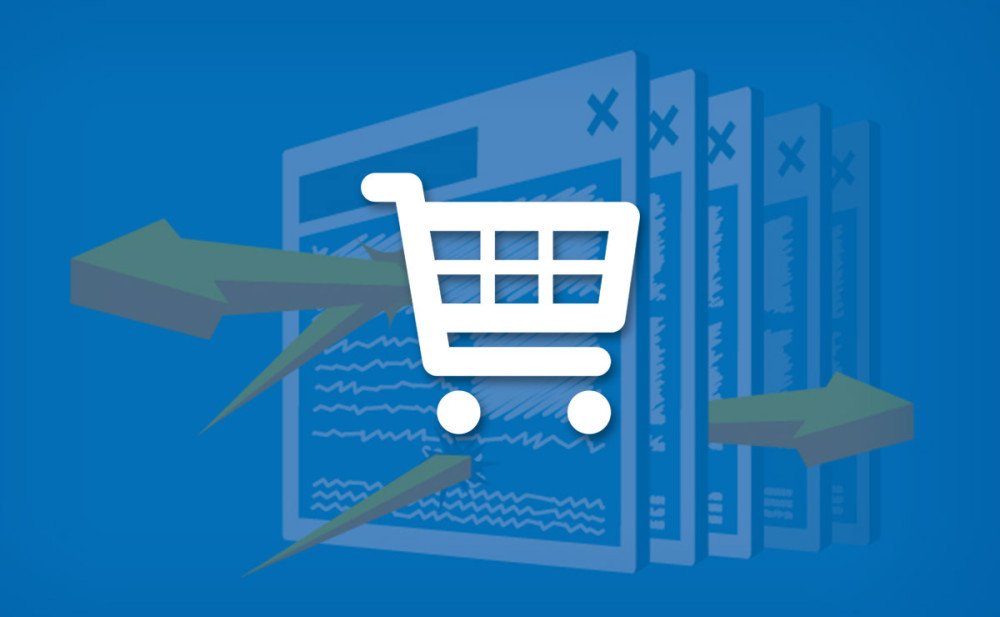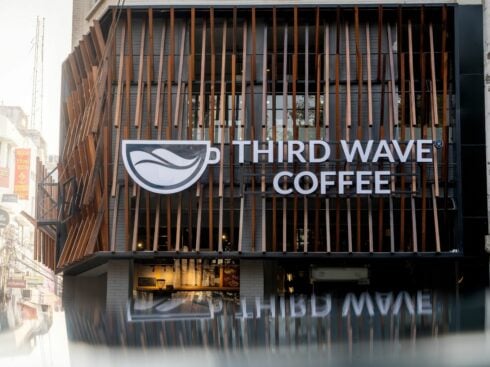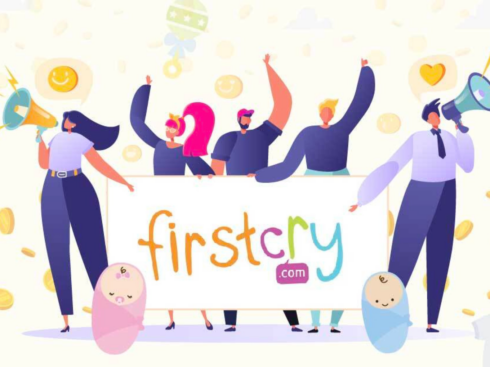Let’s say, a user visited your website. He hung around for a few seconds, and without visiting the next webpage, bounced off your site. You just lost one potential customer. Does it sound like an everyday phenomenon to you?
Just when you hoped that the visitor would convert, he immediately bounced off. Of course, higher bounce rate is bad for a site, but it is even worse if you own an ecommerce store.
It is because you are there to make an instant connection with the user so as to convert him to a paying customer. The average bounce off rate for the ecommerce industry is 40% and to ensure that your website’s bounce rate is lower than this, it is vital to get well-acquainted with the term in order to move the pointer in the right direction on the pages.
Let’s get started!
What is Bounce Rate?
It is common to get confused between exit rate and bounce rate, considering that both are counts of visitors leaving your site. The difference, however, is made by the customer’s journey before he bounces off your site from a page.
Bounce rate – it is the percentage of visitors entering the site, staying on one page and then leaving it. Now, this departure could be to another page on your site, or somebody else’s. In both cases, it is the bounce rate of thatpage. So you see, that bounce rate is ‘page specific’ while exit rate is ‘journey specific’.
- Bounce rate defines the effectiveness of a page in terms of engagement. It expresses the percentage of-
- Visitors that end on the first page or the page they see at first on the website
- Performance of every first page informing that instant connection with the visitor
- Knowledge or relevant information that the page provides
- Visits, where there has been zero purchase
Note: Not always is higher bounce rate a sign of poor performance. Think about a website that solves the purpose of viewing multiple pages by providing specific knowledge on just one page, such as Wikipedia.
“Bounce rate is not the exit rate of visitors, but it is the percentage of their whole journey on that page”
What is Bounce Rate for Ecommerce?
For ecommerce, the interpretation of bounce rate is correlated with the purchase conversion rate. Lesser the purchase, higher is the bounce rate. Bounce rate will provide important cues for which product promotions and collections at the category levels of your taxonomy are doing well.
While it is difficult to define the ‘good’ bounce rate, you can certainly evaluate it by overcoming the factors that make the visitors bounce off the store.
- If the bounce rate is between 26-40%, your website is excellent
- If it is dancing to the tune of 40-55%, your website is average
- If it is more than 70%, your website is unacceptable and non-engaging
Two out of every three visitors who land on the store leave without conducting any meaningful engagement. To have a meaningful bounce rate, instead of comparing it with an arbitrary model figure, compare it with your own previous bounce rate ratio and improve.
Note: Bounce rate below 20% (problem with analytic setup) and over 90% (problem with the website) both are the poor rate signs to predict the future of an online store.
How Can You Measure Your Bounce Rate?
You can measure your bounce rate with the help of Google Analytics. It measures the time spent on your site reading a blog post (or viewing your products) as the difference between when they first landed on your page and his last page view (exit) on your site.
Google Analytics will help you measure your overall site bounce rate, bounce rate of each landing page, bounce rates of individual search keywords, and bounce rates for traffic coming from different sources.
Click here to get starter tips on how you can measure your site’s bounce rate.
Ecommerce Bounce Rate Taxonomy
Bounce rate is classified into 3 main categories:
- HardBounce– Users viewing single page and showing engagement of less than 4 seconds. They are the ones who happen to be on the page by mistake, expecting completely different products. They are less likely to return intentionally from the previous experience. They bounce immediately.
- MediumBounce– Users viewing a page with 4-10 seconds of engagement time.
They are the users who are definitely looking for specific category or product that they are unable to find on your page. By changing the layout of the landing page, you may increase the engagement. - SoftBounce– Viewing a page with more than 10 seconds of engagement time.
They reach the specific website, spent some time in reading, viewing, moving the pointer and are actually interested in the products the store offers. They are the ones who willingly return to your store again for it has matched their desire, solved the purpose of the visit (or maybe it didn’t, but looked promising) and has engaged them.
What Makes Visitors Bounce Off?
Visitors leave your store for a whole set of reasons but for the most part it is because the content on the site is irrelevant to their search query. Other reasons include —
- Your website’s load time is more than two seconds
- Products fell short to meet the distinct device requirements
- Too many pop-ups
- Failed call-to-action
- Technical issues (some part of page shows PHP Code instead of text)
- Wrong selection of keywords
- Unclear headlines and technical jargons
To have a better understanding of the reasons that annoy users and make them jump out of your page are further classified into three factors – Internal, External and Marketing Factors.
i) Internal factors
- Website Navigation
- Website Content
- Web Design and its Usability
- Technical Issue
ii) External factors
- Inappropriate Results from Search Engine
- Irrelevant External Links
iii) Marketing factors
- Wrong Keyword Selection
- Page Title and Meta Description
What Strategies Can You Use to Reduce The Bounce Rate?
There are too many possible culprits here.
First of all, one thing that you have to remember is that if a bounce occurs, it does not mean that there has been no action by the user. There are common visitor actions that people fail to count in for bounce rate determination. For instance, the user may have :
- Liked you on Facebook
- Bookmarked your site
- Followed you on Twitter
- Recommended you to the peers
- Emailed the website link to a friend
- Left a comment
- Returned to the site later or taken actions offline
Some of these actions can be tracked properly by using web analytics to reduce the bounce rate. Furthermore, offline action is one of your key indicators to measure the bounce rate. So, try to understand the content that fosters it. Also, you cannot tie it directly with web analytics, but can use it to deliver the success and unmet goals.
“Offline action is one of your key indicators to measure thebounce rate”
However, to make your bounce rate sound meaningful, it is essential to follow certain strategic steps that ensure bringing more productivity and action on your page.
Enhanced Page Usability
The effective use of the product pages tells a lot about your business. From the very first look of the page, a lot can be taken in by the visitor, such as-
- Is the company genuine?
- Does the page sell quality products?
- Is it secure for committing a purchase? And more.
Let’s take a look at an example to understand it better:
Summing it up, for a page with enhanced usability you need to consider six actions, i.e.
- Good color contrast
- Large fonts
- Large headlines
- Bulleted list
- White space
- Sensible organization.
Impressive Page Design
After you have enhanced the usability of your page, there are other design-centric elements you need to consider. Consistent use of color and fonts is a must on your website.
How will you choose the right color? Stick to the colors that justify your brand and do not use more than two font types throughout the page. Adobe’s Color Wheel is a tool that helps to search for colors that can work well together.
Link the promotional banners and content to the correct product category. And remove all the filler content.
Speed Matters
Consider this- 40% of people abandon a website that takes more than 3 seconds to load! (source)
Slow load time is, indeed, frustrating and at worst, it is useless.
How will you solve a slow page speed? By reducing the file size of images on the page. If needed, use the image with the smaller size at first instead of forcing the size down in the code. Also, do check for any plugins installed on the site. You can test the load speed of your website here.
Don’t forget – 1% increase in load time can cause less than 11% pageviews, 7% fewer conversions and 16% decrease in customer satisfaction.
There are 3 things you need to keep a watch on to speed up your page load, i.e.
- Use little or no self-loading multimedia content
- Set external links to open in new windows
- Do not let ads interrupt or distract the visitor
Good Content
Greet your visitors with good and relevant content as soon as they land on your website.
Why? Shoppers expect the online store to provide detailed information about the product. They expect high-end images and quality products readily available on the page. Adding videos would be a plus.
Meeting these expectations not only improve the shopper’s perception for the business but also increase your conversion rates. This is an example of a product page on a shopper expectation.
How to provide high-end content?
- Focus on the main message
- Clear headlines and sub-headlines
- Tailor it to intended visitors
- Stylish copy and images
- Zero errors
- Clear calls-to-action
- Links to next steps
Optimize For Device Type
Your website needs to be mobile-friendly. This is not only because Google rolled out its mobile-friendly update, but because shoppers now expect your website’s text and picture to be responsive on any device they view it on!
What to remember when designing responsive site? Ensure that you do not compromise on speed and ease of page navigation. Test the responsiveness on different devices and check whether or not the look and feel of the website change if you switch the devices. For mobile devices, make use of icons to expect the ‘tap to call’ rather than words. Here is an example.
According to digital marketing report 2015, more than 75% of smartphones and 47% of tablets are used for surfing the website. This clearly says that there will be a drastic increase in the sales of mobile devices.
“Ensure your store is entirely navigable with one thumb and there is less hassle on tapping”
Targeting Right Audience
Often, you get so busy in garnishing your ecommerce website with other factors that you fail to catch up with the right audience.
However, targeting your audience is no longer about understanding the demographic data. It is about understanding your audience, getting to know them well, their likes & dislikes and knowing where they hang out more online.
When you are armed with this information, you will be ready to point the cursor in the right direction.
Let’s take a look at the 5 pointers to attract the right visitors-
- Choosing the right keywords matching your content
- Creating multiple landing pages with unique content and keywords for different types of visitors
- Maintaining top rankings for branded terms
- Writing useful meta-descriptions for search engine users
- Improving targeting of online advertising campaigns
Words to Remember
Implementing the aforementioned points is necessary for your ecommerce website to be successful. Remember that you do not need to get obsessed with lowering your bounce rate or to keep comparing your bounce rate with other leading brands. What is essential is to invest a constant effort to find valid methods to bring down the rate.
Implementing these points will help you gain maximum traffic to your ecommerce website and thus decrease your bounce rate.
Download an interesting research on what works (and what doesn’t) in email marketing for ecommerce by TargetingMantra.

































